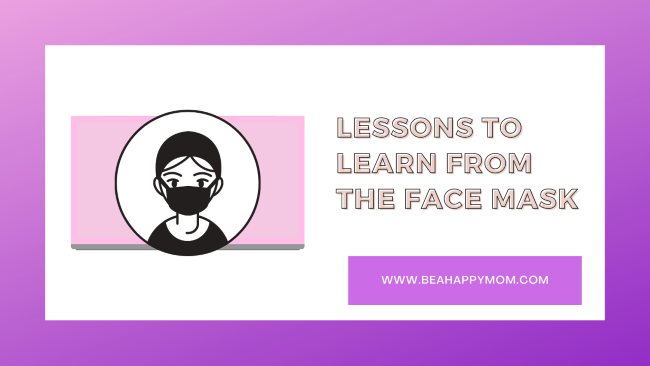Recently I posted an article regarding prevention and occupational therapy. The article was really the start of a series of articles, probably more like a category. In this article, I wish to pick up on the notion of the face mask and explore this a little.

I am intrigued at the amount of reactions there seem to be about wearing a face mask. There definitely seems to be a virus about that is at the level of a pandemic. As I have mentioned elsewhere, a pandemic is a type of plague, that means that we are going through some kind of judgment from Above. The question is what can we do about it? What can we learn that might help us to change our ways and merit a healing or salvation from G-d?
Since one method to limit the spread of germs is wearing a mask when among people and indoors, let’s look at this mask. The mask covers the nose and mouth. The Torah teaches us a three prong approach to requesting a positive change and an end to a plague. This being Teshuvah usually translated as repentance. Learning Torah covers this too, since it helps us to figure out what we need to repair. Tefillah, translated as prayer is the second prong and the final one is Tzeddakah or charity.
If we think about the activities that the nose and mouth are involved in. The nose is involved in smell. What do we know about smell? We read in a number of places of the pleasing aroma that rose up to Hashem. This would be from the sacrifices that took place in the Beis HaMikdash. We don’t have a temple so is there anything that correlates to the sacrifices? In deed, there is. Prayer is said to replace the sacrifices of the Holy Temple.
We can also ask, to what extent are we showing the appropriate respect to Jerusalem, the Holy City in which the Temple stood and will stand again? What are some of the actions that show our respect for Jerusalem?
– Tikkun Chatzot
– Reciting Korbanos in Shacharit
– Dressing appropriately for Jerusalem
– Having a blocked out area on a wall in your home in Jerusalem to remember the destruction of Jerusalem.
– Following all the laws related to our behavior at the Kotel
– Taking time to pray from a siddur three times a day with concentration
These are just a few, I’d like to hear from you what you would add to the list. I have more in mind, but I’d love to hear your thoughts.
There is more we can say about this, but let’s move on to the mouth that also gets covered by the mask. What actions or Mitzvot relate to the mouth?
An obvious first would be Kashrut, how we eat as well as eating Kosher food. For this year that would include Shmita too. Then there are all the Mitzvot that relate to our speech, reciting blessings which are another form of speech. Three hundred years ago, there were two brothers, Rebbe Reb Elimelich of Lezinsk (1717 – 1787) and Reb Zusha of Anipoli (1718 – 1800) who were contemporaries of the Alter Rebbe, all three were students of the Magid of Mezeritch. There is much to learn from all three of these Rebbes. For now, let’s take a look at a little about Rebbe Reb Elimelech of Lezinsk.
Rebbe Elimelech was said to be very humble and to love every Jew. He was known to give blessings and pray for the needs of others. When he prayed, he did so with such intensity that his neck was seen to turn red and his face to turn white, an illustration of the intensity of his prayers.
Rebbe Elimelech and his brother would travel from town to town, inspiring their fellow Jew to do Teshuvah which they would do through the medium of telling stories. An important part of his love for his fellow Jew included being careful with one’s speech.
Guarding one’s tongue is so important that Rebbe Elimelech would encourage his fellow Jew not to start a conversation and as far as possible to limit one’s speech all together. If one did speak with another person, it needed to be only when really necessary and then, if one really had to speak, before saying anything to put one’s words through thirteen sieves. The number thirteen corresponds to the number of siftings required for the Omer (a type of offering) which we see relates to the idea I posed before of the reminder of the offerings that took place in the Holy Temple.
What were these thirteen sieves? Rabbi Aryeh Kaplan in his book of Chassidic Masters states: ”That when speaking, we should speak only when it is necessary and to speak very few words, sifted with thirteen sieves so that your words not contain falsehood, flattery, malicious gossip, talebearing, boasting or embarrassment to another. Counting these, I get the possibility of seven sieves. What would you think about to help to filter your words thirteen times?
In a sense, the teachings of Rebbe Elimelech are rather similar to the work that Rabbi Kagan some two hundred years later became well known for. I refer of course to the Chofetz Chaim whose teachings stress the importance of loving kindness and guarding our tongues. If you would like to gain some insight into the teachings of the Chofetz Chaim, I encourage you to watch a video that my husband recorded at the time of the first lock down in Israel. The ideas in the video are just as valid now as they were at the start of the current plague known as Covid.
While many try to remove their masks, I hope you will take some time to contemplate the symbol of the mask and what we can learn from it. Of particular importance is guarding our tongues or stopping to think if our words are going to be beneficial. Are they positive, are they uplifting. Do your words include a blessing or perhaps a prayer for another?
I hope you enjoy the video below. If you do, please click the like button and subscribe to my husband’s YouTube Channel.


